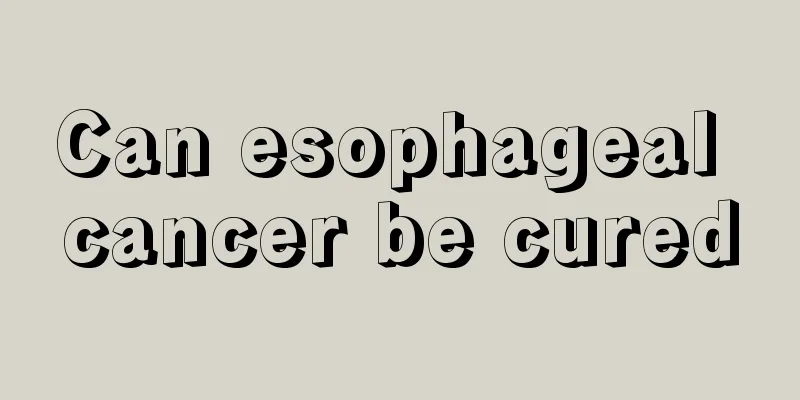The four main symptoms of drug-induced hepatitis

|
Drug-induced hepatitis mostly occurs in people who are in poor health. Because they need to take medication frequently to treat their bodies, some of the medications they take may damage the liver, leading to drug-induced hepatitis. Many people don’t know what symptoms will occur when drug-induced hepatitis occurs, so today I will share with you some symptoms of drug-induced hepatitis. 1. Clinical manifestations are related to the types of liver-damaging drugs and the mechanisms that cause liver disease. Drug-induced hepatitis can be divided into acute and chronic categories based on its clinical characteristics. Among acute liver cell damage, acute drug-induced hepatitis is the most common. When liver cell necrosis is the main feature, the clinical manifestations are similar to acute viral hepatitis. Symptoms of drug-induced hepatitis often include fever, fatigue, poor appetite, jaundice and elevated serum transaminases (2 to 30 times the normal value). ALP and albumin are less affected. Hyperbilirubinemia and prolonged prothrombin time are related to the severity of liver damage. For patients with mild symptoms, recovery can be achieved in a short period of time (weeks to months) after stopping medication; for patients with severe symptoms, liver failure, progressive jaundice, bleeding tendency and hepatic encephalopathy may occur, often leading to death. 2. Acute drug-induced hepatitis with allergic reactions as the main feature is often accompanied by fever, rash, jaundice, lymphadenopathy, and moderate elevation of serum transaminase, bilirubin, and ALP. The history of drug exposure is usually short (within 4 weeks). 3. Drug-induced hepatitis with cholestasis as the main feature has clinical and laboratory manifestations similar to those of intrahepatic cholestasis, extrahepatic bile duct obstruction, and acute cholangitis, with symptoms of fever, jaundice, upper abdominal pain, itching, right upper abdominal tenderness, and hepatomegaly. The manifestations of drug-induced hepatitis are accompanied by elevated serum transaminase concentrations. ALP increased significantly (2-10 times), conjugated bilirubin increased significantly (34-500 μmol/L), bile salts, lipoprotein X, GGT and cholesterol increased, while anti-mitochondrial antibodies were negative. Generally, recovery occurs 3 months to 3 years after stopping medication. In a few cases, bile duct disappearance occurs with a chronic progressive process. Occasionally, bile duct damage is irreversible and progresses to cirrhosis. 4. The clinical manifestations of drug-induced chronic hepatitis are similar to those of autoimmune chronic hepatitis, ranging from mild to asymptomatic to severe to liver failure with hepatic encephalopathy. The biochemical manifestations of drug-induced hepatitis are the same as those of chronic viral hepatitis, with elevated serum transaminases and GGT. The progressive type leads to cirrhosis with hypoproteinemia and coagulation dysfunction. |
<<: Treatment of drug-induced hepatitis, here’s what you need to know
>>: What to eat for drug-induced hepatitis, these 6 nutrients are indispensable
Recommend
Is there any cure for advanced prostate cancer?
For any malignant tumor, the treatment effect is ...
What causes cracked heels
In life, due to climate changes or diet and other...
What should I do if I get anxious and irritated and want to hit someone when I hear noise?
If you feel flustered and want to hit someone whe...
What is the probability of rectal cancer being inherited? Will rectal cancer be inherited in people over 80?
Rectal cancer is a well-known cancer. People arou...
Analysis of the causes of stomach discomfort when waking up in the morning
The human stomach and intestines are an important...
What is the reason for the pain in my right upper arm
Many people think that pain in the right upper ar...
Do you know what the symptoms of anemia are?
Anemia is a relatively common symptom. Anemia doe...
The reason why children don't eat vegetables is
Many parents are troubled when their children ref...
Six things to note in postoperative dietary care for colorectal cancer
Colorectal cancer is a common malignant tumor in ...
How to remove scale from fish tank
Many families raise fish. This is a way to regula...
Will the nail matrix nevus disappear on its own?
People may not know about nail matrix nevus, but ...
What is reflux esophagitis grade A and how to treat it
Reflux esophagitis is divided into grades A, B, C...
Features of TOMO radiotherapy for laryngeal cancer
Laryngeal cancer is a major cancer that endangers...
How does laryngeal cancer spread and metastasize?
In recent years, laryngeal cancer has become one ...
Can the roots of mushrooms be soaked in water and drunk?
The root of the fungus is actually the root of Ar...









